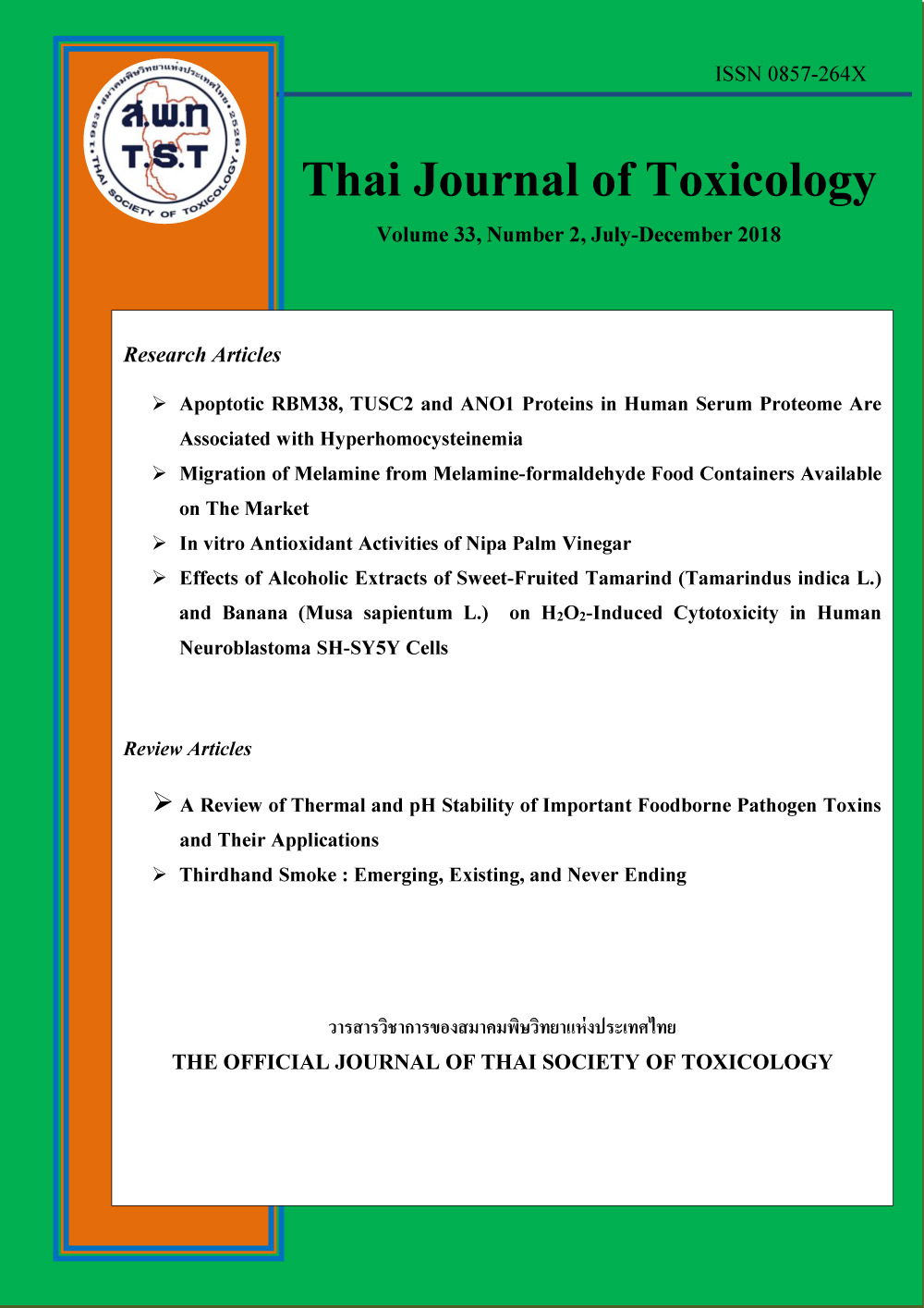Migration of Melamine from Melamine-formaldehyde Food Containers Available on the Market
Main Article Content
Abstract
Melamine is a monomer used in the manufacturing of melamine-formaldehyde (MF) resin, shortened to melamine. According to the Notification of the Ministry of Public Health No. 295 (2005) Re: Qualities or standard for container made from plastic, MF is permitted as a material used for manufacturing of food containers but there is no specific migration level (SML) of melamine. Melamine may cause harmful effects to kidneys and may be migrated into food. The purposes of this study were to investigate the migration of melamine from MF food containers which is beyond the scope of the regulation. A total of 41 table-wares collected from market were analyzed. The results showed that 40 samples were made of MF as food contact surfaces and the rest one was made of urea-formaldehyde (UF). There was only one failed to comply with Thai regulation. An analysis of melamine migration was also performed. There were 13 samples (31.7%) found melamine levels exceeding the SML of Commission Regulation (EU) No 1282/2011 (2.5 mg/kg). Among the non-complied samples, 3 samples (18.8%) were MF containers and 10 samples (41.7%) were UF containers with MF inside coating. Moreover, the mean values of melamine from the second group were significantly higher than the first one. These results suggested that melamine wares sold on the market might have melamine migration higher than the restriction limit of EU regulation. For protecting the consumers, it is recommended that the national authority should establish regulatory limit for melamine migrated from food containers.


